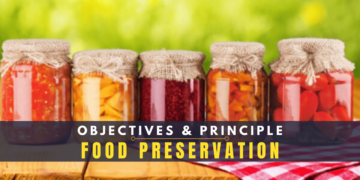Our Fore Chef Fathers had documented the art and science of cooking esp the finesse secrets in their minds but seldom or rarely passed down the line to the second line, as a result the market might have soared in their pioneer stage but seems crashed, the traditional aspects are down and even in the 21st century, we are more adulterated with and food-fusion and also don’t have this good habit of documenting and preserving the tricks and traits of the treasure – food world archive, nor refer that, that are documented for reference.
Indian vernacular architecture is the informal, functional architecture of structures, often in rural areas of India, built of local materials and designed to meet the needs of the local people. The builders of these structures are unschooled in formal architectural design and their work reflects the rich diversity of India’s climate, locally available building materials, and the intricate variations in local-social customs and craftsmanship. This with the makers of cuisine needs no introduction or body, just proud to be a part of it.
The chef’s intellectual justification for this shift has been on the verge of collapsing and the increase in the demand for change of course, from the austerity growing more obvious with each recipe made.
In our culinary world we have a free-market ideology, just freak out even if it’s not what you preach towards authenticity of the Cuisine. A big blow to the richness we ought to cherish and be proud of.
The Geographic Location, Climate, Customs, Costumes and eating habits of customers of any domicile that would include availability of raw materials and space, Skill level of staff (more the skill, more variety available), Climate or geographic locations, influence of history (Punjabi, Bengali & Gujarati), Balancing of Menu (Nutritionally adequate), Budget available (constraint at times), Demand (customer centric), Available equipment, Type and size of establishment (school, residential college, university, industrial, transport, hospital etc.), Time of the day (Breakfast, lunch, dinner, supper, hi-tea or special function), Time of the year (vacation, festivals), Pricing of the menu (Pocket power – Main factor), optimum use of ingredients in hand and no repetition of ingredients from dish to dish in any menu, Storage facility (food group-perishable, non perishable etc.), Type of service (Different service, different food – a’ la carte, Table d’hote, buffet & finger food), Policy of the establishment (beef, pork etc), Use menu language and sign symbols that customer can understand, Special days (Christmas, New Year etc), Profit margins, Number of courses, Sequence of service course, restricted use of unnecessary color, flavors and Ajinomoto like chemicals.
My personal Culinary Policy Bargain would try to answer the question, Is this real great culinary asset? Because… it is what sells (very important and effective, I agree). What is the incentive to allow us to let the cuisine restore and grow because then we can meet up our originality debt. With today’s new facelift, my view is rooted on the moral principle of reducing overall cuisine encyclopedia to a mere “Just Arrived” when we talk of culinary wealth.
One feature of vernacular culture is that it is informal. Such culture is generally engaged in on a non-profit and voluntary basis, it generally implies a cultural form that differs markedly from a deeply rooted folk culture, and also from tightly organized subcultures and religious cultures. So is the cuisine pure and traditional to its origin with its uniqueness unexplored, for its extravagant sub-cuisines (of the one and only India).
I know, I cannot buy promises from the culinary responsible citizens of the world, but I can bolster that all those rising for the cause, all of them will be the ones who have to finance (be the source – be the one to start) and refuel (research) beyond the authenticity anemic culinary world.
A mere like from your end can be misleading, but has to be reinvested to produce a gain of some percent. It is for us to understand that the decline is the rise of nontraditional culinary business. And though the erosion has happened gradually over decades, the surging dexterity of regional popularity and reaches raising concerns, it has to be a self-help strategy to be exploited, better late than never.
My personal philosophy is not fueled by a rush for profits, but a break-even point first and definitely taking advantage of the culinary concern that has temporarily halted, actually a confluence of a bunch of factors from domestication of Cuisine, get corporate source of funding and involve locals with a thematic focus. It is difficult to figure out sustainability. But, here I am rushing to strike winning culinary taxing deals.
In a haste to modernize, we are losing our culinary history. We have over 100’s to 1000’s years of history, but running towards westernization among-st a lot of drawbacks. Let’s Indianize – architecture, culture, mysticism.
For those subject to the culinary responsible citizens, there are myriad ways to avoid and meager ways to actually do anything close to that. By taking advantage of a warren of credits, deductions and exemptions by the chef community, we are at the start to compete with zero.
Let us not wait for the world to reform the corporate culinary code for us; instead we are going to do it ourselves for the world.
Let’s pledge – Dishing out Chefs’ Excellence.
By,
Mr. Salla Vijay Kumar.
Guest Contributor – Hospitality Connaisseur.
LinkedIn
(Mr. Salla Vijay Kumar is a Sr. Lecturer & Q-MTC Learning Facilitator at IHM Ahmedabad)





























